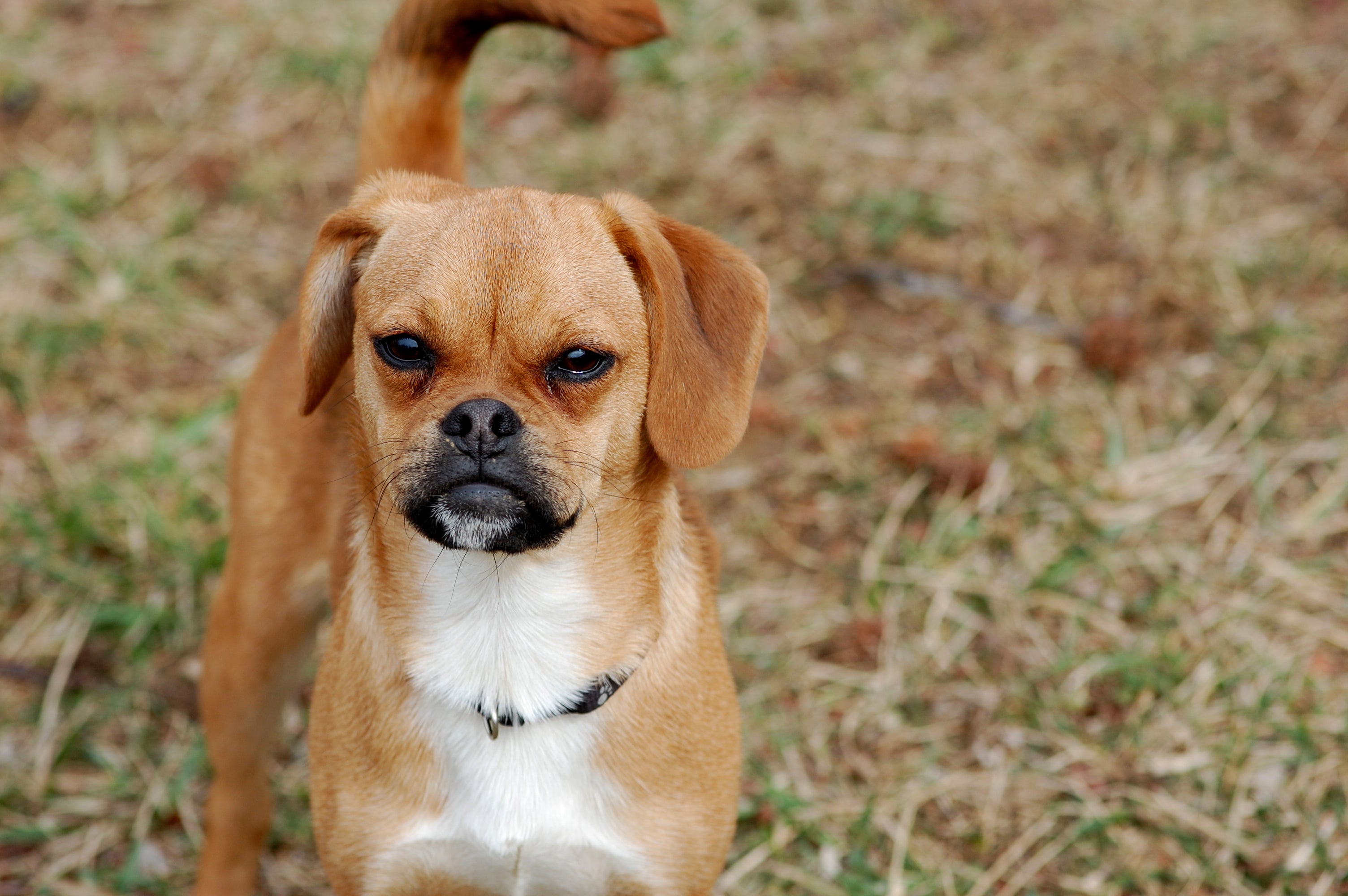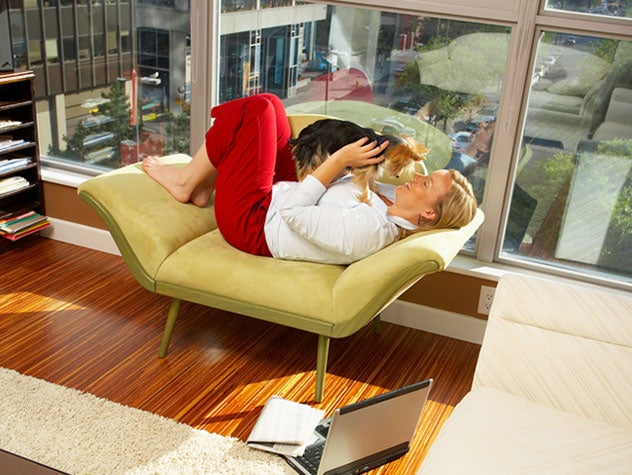Breed characteristics carousel
Learn More
Need to Know
- Dog suitable for owners with some experience
- Extra training required
- Need to be aware of potential health issues
- Enjoys active walks
- Small dog
- Some drool
- Requires frequent grooming
- Chatty and vocal dog
- Barks and alerts to visitors/anything unusual
- Generally friendly with other dogs
- Gets along with other pets with training
- May need additional supervision to live with children
- Needs a small yard
- Can happily live in urban areas
- Can be left alone occasionally with training

Personality
Puggles are generally cheerful, affectionate, and friendly. They tend to be a well-balanced breed that is just as happy playing with their owners as they are cuddling up on the couch. The Beagle and Pug mix breed does well with children, but not as well with cats. They are curious dogs, and due to their Beagle makeup, are inclined to bark to alert. Mischievous and funny, they can suffer from separation anxiety if left alone for too long.
The Pug dates back to ancient China, coming to England in the 1600s. They caught on quickly in the courts of Europe, with Queen Victoria keeping 36 of them. The Beagle is the smallest of the British pack hounds and has a ferocious sense of smell. This happy-go-lucky dog also found favor amongst the nobility. The Puggle was first bred in the U.S. in the 1980s as a Pug and Beagle mix.
Ideal owners should be ready to embrace a scent hound who has those instincts ingrained in them. Owners should also understand that training a Puggle with more Beagle might mean a more stubborn approach; however, positive reinforcement and a lot of treats will help!
Beagles and Pugs have varying exercise needs, and the Beagle Pug mix breed falls somewhere in between. Beagles love to exercise and expend energy while Pugs need minimal enrichment and cannot exercise for long periods of time due to their flattened face which can make heavy breathing difficult. Your Puggle can be any combination of the two personalities.
The Pug Beagle mix breed doesn’t need an ample amount of space and can easily live in a smaller apartment or in the city as long as they have access to the outdoors for walks and to use the bathroom. Puggles will be equally as happy in rural and suburban areas. Owners should make sure that yards are securely fenced as Puggles love to get up to no good if left alone.
Both the Pug and the Beagle have short coats that don’t need much grooming, but they will shed. If your Puggle dog has skin folds they will need to be kept clean and dry. Their eyes should also be wiped frequently.
While Pugs are generally very easy to train, Beagles are more stubborn and slow to catch on to training habits. Beagles tend to get caught up in their hunting instincts and are unable to shift focus if following a scent and understanding recall. Puggle puppies will need to be taught to walk on a leash and harness for easy, efficient walks.
These fun-loving, friendly dogs are great family pets that get along well with everyone. They generally do well with other dogs and are suitable for families with children.
The cost of a Puggle from a breeder is significantly more than the cost of adopting one from a local shelter or rescue. The adoption fee usually covers additional items such as spaying or neutering, vaccines, and microchipping.

Learn more about feeding and caring for your Puggle on Purina.
Did You Know?
- Puggles are known to be skilled escape artists.

